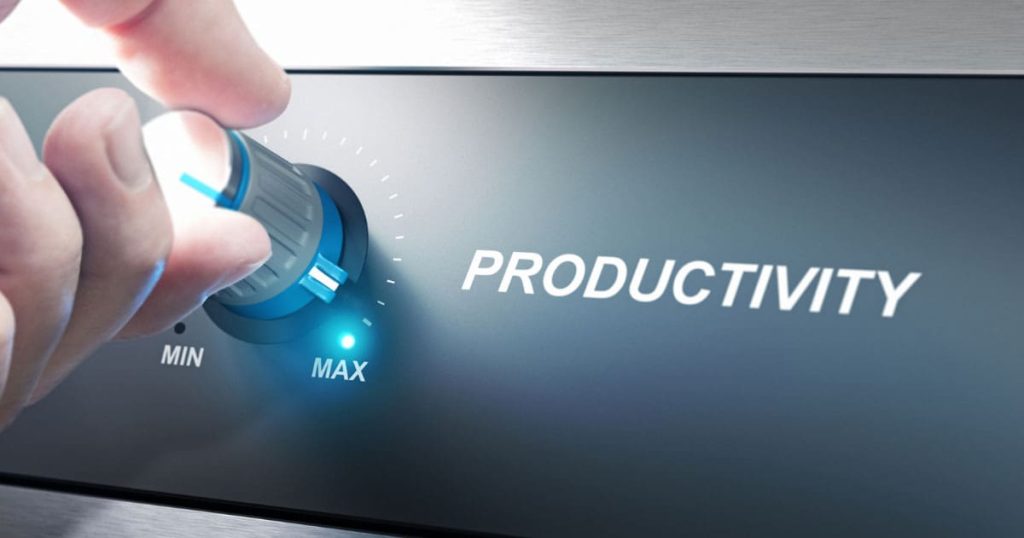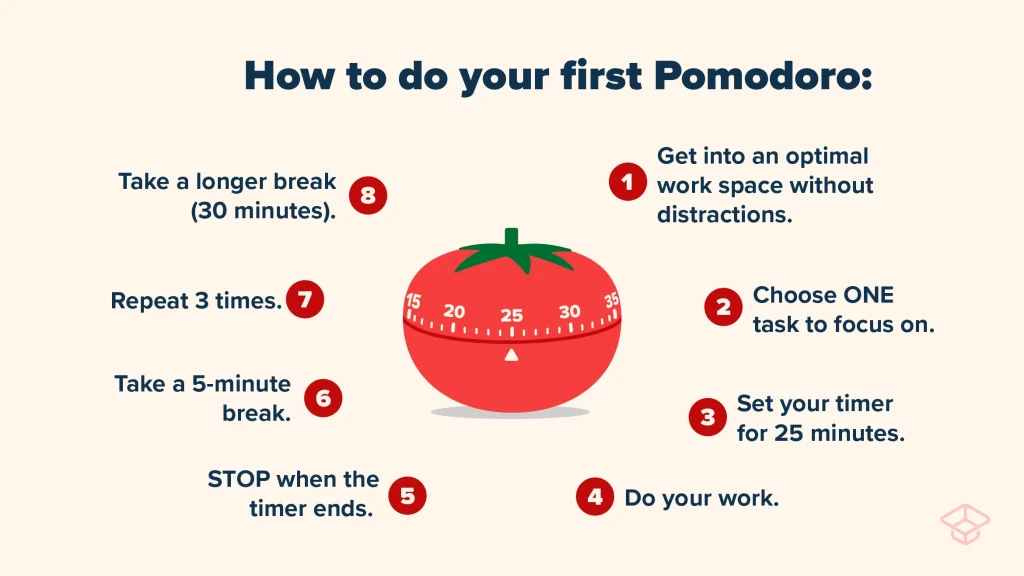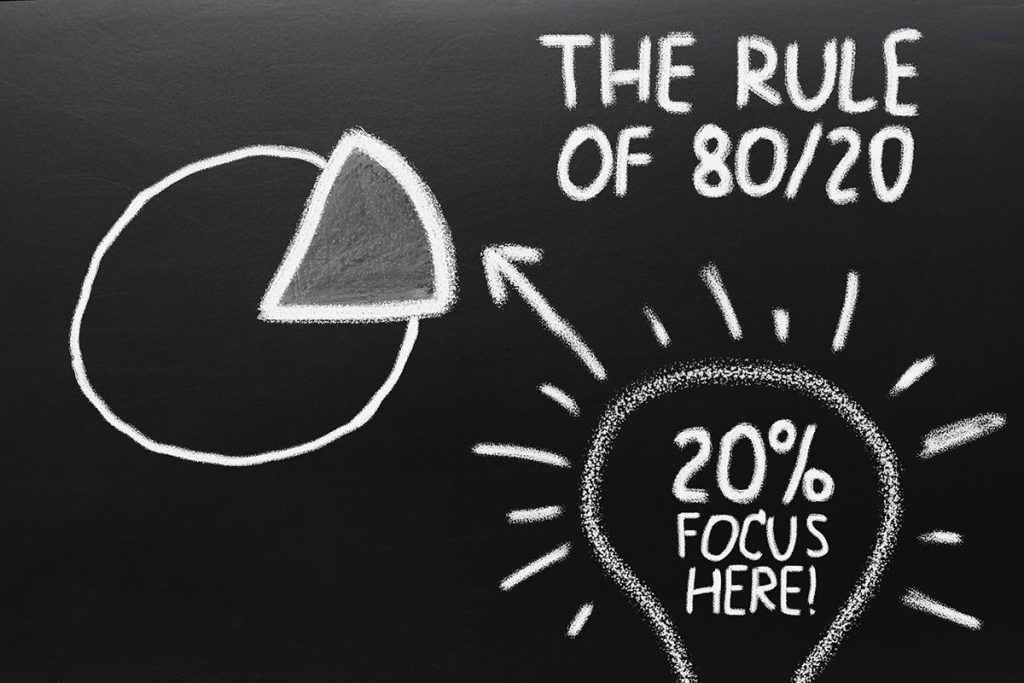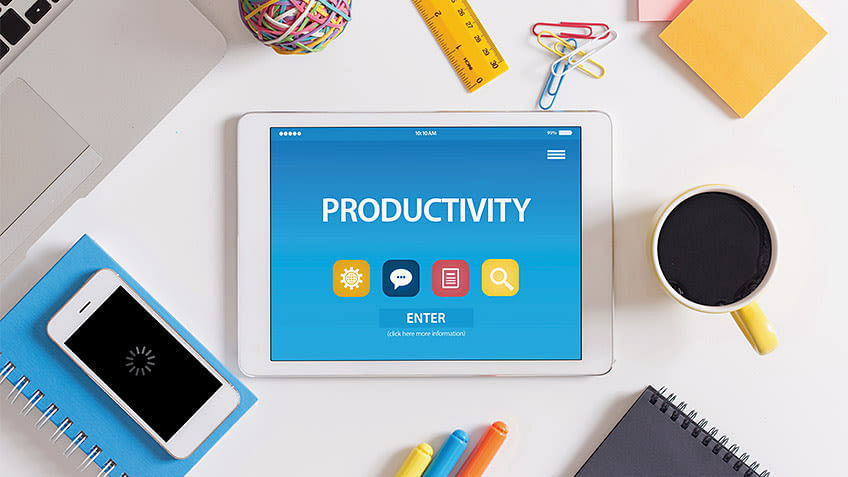This is the ultimate guide to maximizing your productivity system.
In this comprehensive guide, I’ll cover the following :
- The basics of a productivity system
- What system is best suited for you?
- How to build your own system
- What are the best productivity systems?
- Productivity tips and hacks
So if you want to improve your your productivity and maximize your output, you’ll love this guide. Let’s get started.
Productivity System Basics
In this chapter, I’ll cover the fundamentals of a well-working productivity system.
First you’ll learn what a productive system is (and why it is important for improving growth in all facets of your life).
I’ll also show you case studies on how productive systems has improved certain aspects of my life.
What is a Productivity System?
Productivity system is a series of methods and resources that people use in their daily routine with the goal of getting organized so that you spend less time doing things the things you have to do and spend more time doing the things you want to do.
Why is productivity system so important?
To put it simply, they help you to organize your to-dos, priorities, and schedule in a way that it is easy for you to manage.
The biggest benefits is that it makes it easy for you to see all the activities you need to do at a point in time and choose what to do next.
The system helps you organize in such a way that you have less mental distractions and thus keeps you working efficiently.

This system doesn’t give you a set of rules that shows you how to actually work. Instead it focuses on how you see the work, organize and then choose what needs your attention the most.
How you organize your system is up to you, but remember not to over hack the method.
It is the small things that makes it work.
How Productivity Systems Helped My Growth
A lot of my friends believe that I don’t have any thing tangible doing because they think I have a lot of time on my hands. I think this is partly because I always happy to lend a helping hand.
R. Emory Williamson Lundberg calls this the productivity paradox.
I do not rush to answer every email. I am very happy. I do not accept every meeting or hangout invites. I am not working until very late in the night. I am not stressed and anxious most of the day. So therefore, I am slacking off or do not have enough tasks on my plate.
What they don’t know is that I have a system that works for me. The systems helps relieve stress and anxiety from my psyche making me so calm that my friends who do not have my amazing workflow believe that I am doing nothing.
In reality I am getting everything I need done at the right time and seeing my productivity increase as well.
Productive system for you
Now is the time to get more personalized. Specifically, it is time to see what system would work best for you.
And in this chapter, I would show you various systems that would suit your lifestyle.
Let’s dive right in.
It doesn’t matter if you are an entrepreneur, business owner or a freelancer, there are a lot of things that demands your attention at the same time. You have new products to tests, customers satisfaction to worry about and finishing tasks before their deadline. All these tasks on their own aren’t an issue.
The problemis that you have convinced yourself that you have to do everything now. Trying to track all these tasks with your head can be very stressful and you would end up missing a lot of things.
That’s why you are reading this article right now. There is always a better way.
You need a system that is suited specifically for you. A good system would help you understand what needs to be done, bring order and saves you a lot of time and stress.

Getting Things Done – A Serious Productivity System
GTD was created by David Allen and this system is known primarily as the system that kick started the productivity movement.
It is probably the most popular and serious productivity system in the world.
The Basic Concepts
- Collate every single thing that you have to do in every aspect of your life.
- Place all these things in a system that you can track and manage.
- Break the huge task into smaller ones that are easy to manage
- While creating your tasks, ask this question : “what is the next step after this? “
- Make use of a calendar
- Create a context for your tasks, i.e how and where you are going to perform them.
- Review your progress and next course of action weekly.
The GTD system can be a bit much for beginners, but when started it can be very dependable.
All it requires is a lot of discipline on your part.
GTD is suited for: Individuals who don’t mind learning a new system and have enough discipline to see it through.
GTD is not suited for: Individuals who don’t have enough discipline and are not ready to commit to the system.
Kanban – A Visual Productivity System
This is a visual system that was made popular by the Agile project development framework.
The tool is perfect for managing team projects. It allows a team to collaborate very easily and manage their workflow.
You can also use it for personal management. (A good example of an app using the Kanban system is Trello).
The Basic Concepts
- Kanban makes use of visual tools like boards lists and cards.
- Each board would represent a particular project. (Each board usually contains a list of tasks)
- The lists demonstrate the various stages of the project (To-dos, In-progress, Testing, Completed). A list would then have cards in them also.
- These cards represent a specific action (Choose color of paint for the bedroom wall, what host to use when building the website).
- The tasks can be moved from one column to another among team members.
Kanban is suited for:people who work in a team, prefer a visual representation and want to see how things are going at a glance.
Kanban is not suited for:people who like a rigid amount of planning and strict control.
Don’t break the chain – an OCD productivity system
The most popular user of these system is Jerry Seinfeld. Majority of people love this system because of its simplicity.
The Basic Concepts
- Decide on the thing that you want to improve over time (it could be a skill you want to learn).
- Make use of a calendar. It could be a physical calendar or an online calendar app.
- Do something each day that would get you closer to achieving your goal.
- Whenever you have done something to achieve your goals, tick an X on your calendar.
- Continue to tick an X as you go on.
It is very simple to do and can motivate you easily.
Don’t break the chain is suited for:People who have long term goals or want to reach their goals gradually.
Don’t break the chain is not suited for: Day-to-day tasks and activities, project planning and listed activities.
Pomodoro Technique – productivity system for the super focused
The beauty of Pomodoro technique is that you can use it alongside any other system.
The system revolves around concentrating your work on certain periods then taking short breaks between them.
It is a very effective way to get your tasks done.

The Basic Concepts
- Make use of timer.(The name Pomodoro was gotten from kitchen timers that were shaped like a tomato)
- Choose the task you want to engage in.
- Set your timer for 20-25 minutes.
- Work only on the task that you have selected for the time duration – stay away from any form of distractions.
- After the end of the time, take a brief break.
- Go back and repeat the third
- After performing the Pomodoro technique 3-4 times, take a longer break.
Pomodoro is suited for:Individuals who get easily distracted and want to see fast progress.
Pomodoro is not suited for:People who are very disciplined.
The “to-do” list – doing the bare minimum technique
This is the simplest and fastest way to improve your productivity. It is the backbone of most of the systems of productivity above.
The Basic Concepts
- Write everything you need to do down in a list.
- Prioritize the items in your list
- Make sure you do the most important things first
- When new things come up, add to the list.
- When you complete the task, cross it off.
To-do list is suited for:People who are looking for a simple yet effective way to improve their productivity.
To-do list is not suited for:projects that involve multi-tasking, complex tasks or doing different tasks at once.
Build Your Own System
This chapter is all about tools you need to build a functioning system.
This chapter would make the whole process easier.
Having proper understanding on how you can improve your productivity puts you a step above everyone else.
Let’s dive into how you can build your productivity system so that you can be able to manage time and organize your life efficiently.
Eliminate before Optimizing
One of the biggest mistakes that majority of us make is that we go straight into optimizing without eliminating the mountains of rubbish that would hinder our progress.

Follow the amazing time management principle called the 80/20 rule.
This principle in simple terms means that 80% of the results should come from 20% of the action our output.
in most languages, the most frequently used 20% of the words account for 80% of the word occurrences
The little things would account for the majority of your results and how successful it would turn out.
Taking all your resources and then optimizing is a classic rookie mistake.
Before optimizing reflect on your set goals and activities. Write on a paper while you ask yourself this question, “Is this task contributing to my goal?”
You should eliminate anything that would not help in the progress of your goal before you start the process of optimizing.
Follow the Principles
There are certain principles you need to follow before you can effectively increase your productivity.
Easy to Learn
If it takes you more than an hour to learn a productivity system, you are either doing something wrong or it isn’t the best for you.
Fast to set up
It shouldn’t take you up to an hour before you get set up your system. in a matter of minutes, you should be done.
Low maintenance
A good system would require minimal time for you to use it and help you work faster also. The less time you spend maintaining the system, the better for you.
Adaptable
The system should be easily tweaked depending on the preference of the individual using it. It should be relevant enough that it could be used by anybody or team.
Easy to scale
Your system should be good enough that it can be scaled for use from a single user to a thousand.
Not All Tasks Are Equal
Even after you have eliminated the tasks that do not add to the progress of your goals, you have to realize that some are still more important than the others.
Evaluate your tasks according to the order of their importance and then prioritize.
To find out which tasks are important and the ones that are not, make use of the Eisenhower Matrix. Insert your tasks into the boxes that they fit in.

Use this matrix every morning to help you manage time effectively.
Productivity tips and hacks
- Now that you know all about systems for optimizing productivity, let’s us check out tips and hacks that can assist you.
- These tips would improve your time management skills, self-improvement ,relieve stress and improve general health.
- Do not use email as a task manager. Your email should be used strictly as a communication tool.
- Build reasonable and regular rituals, they help you save time.
- You should always have a pen and paper with you at all times. Technology can fail at times.
- Don’t multitask. Work on one thing at a time.
- Always close the door and put on headphones to avoid distractions.
- Open the window. You need fresh air to stay focused.
- Take breaks. Give your brain time to rest and re-energize.
- Eat your lunch away from your work area.
- Drink plenty of water. The recommended amount of water vary according to person.
- Focus on the task at hand and not the time.
- Be flexible. Rigidity kills productivity.
- Get plenty of rest.
- Exercise regularly.
- Eat healthy
- Laugh. It relieves stress and boost productivity.
- Learn new things.
- Read regularly
- Write regularly
- Have a vision of where you want to be. It motivates you to work harder.
- Plan ahead
- Check your email less often.
- Listen to podcasts.
- Have a budget
- Create long term and short term goals.
- Keep track of your goals.
I really hope you enjoyed this guide.
And I would like to hear from you.
Which of these tips are you going try out?
Are you going to try out the Pomodoro technique or the Kanban method?
